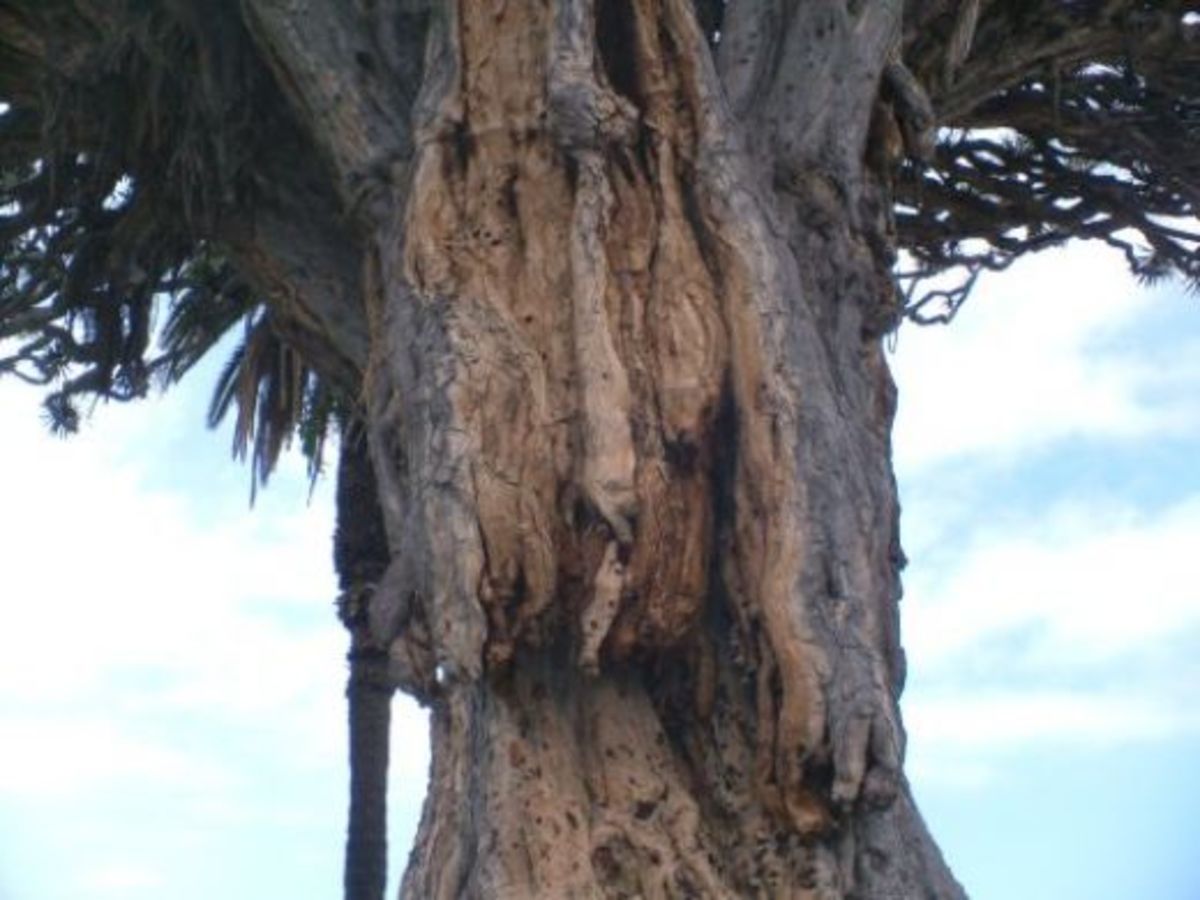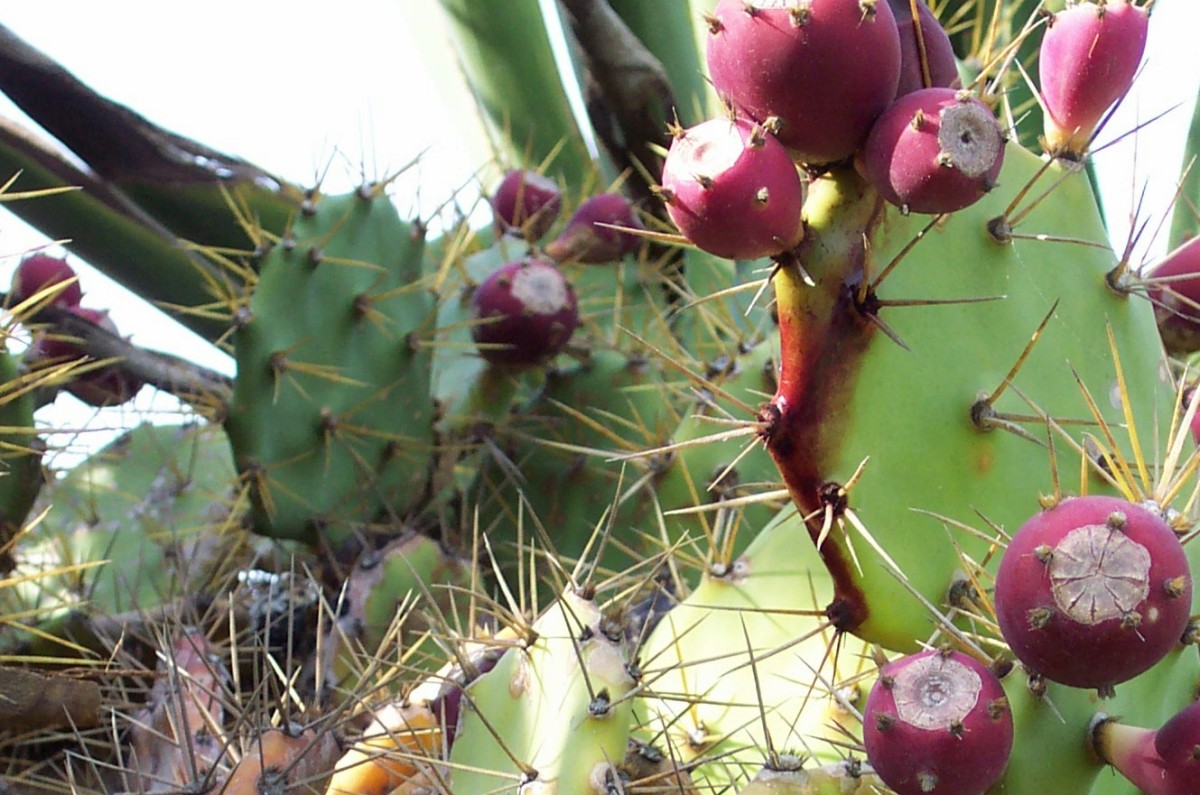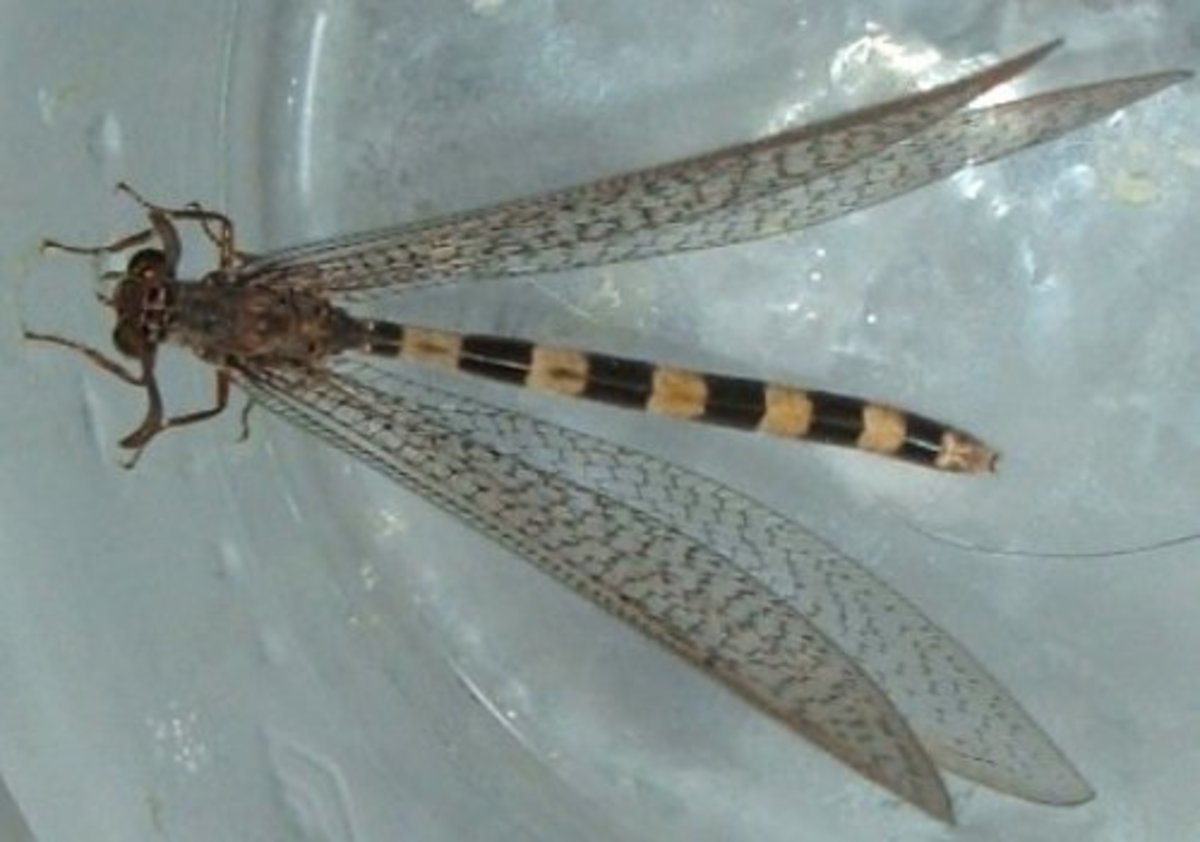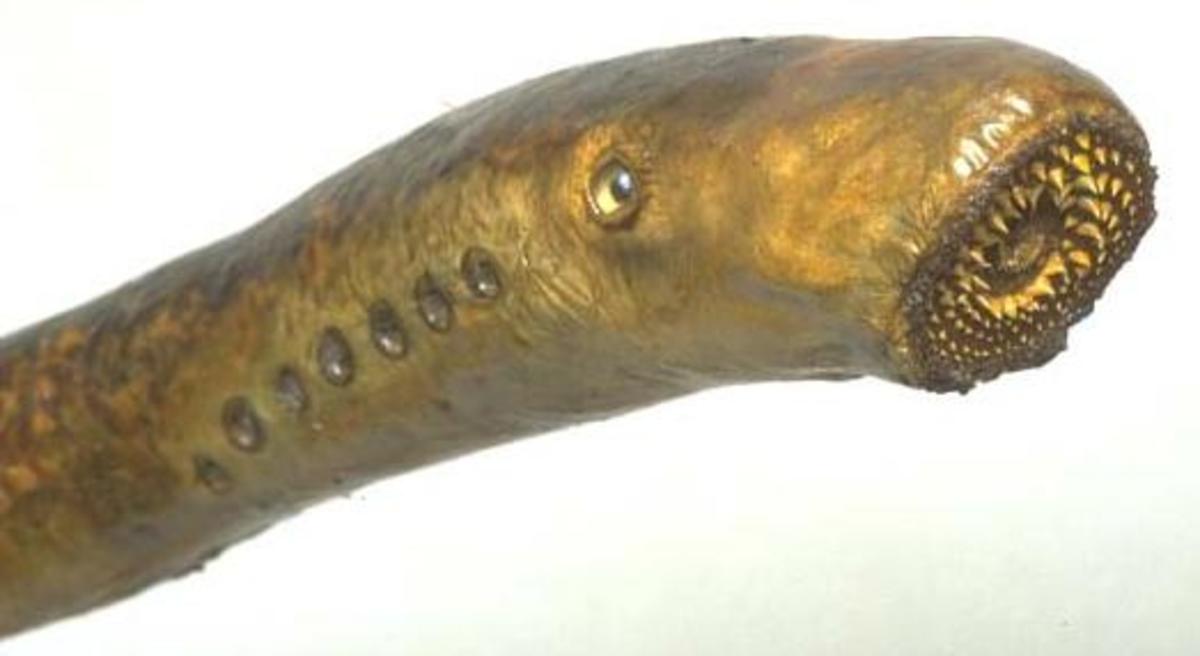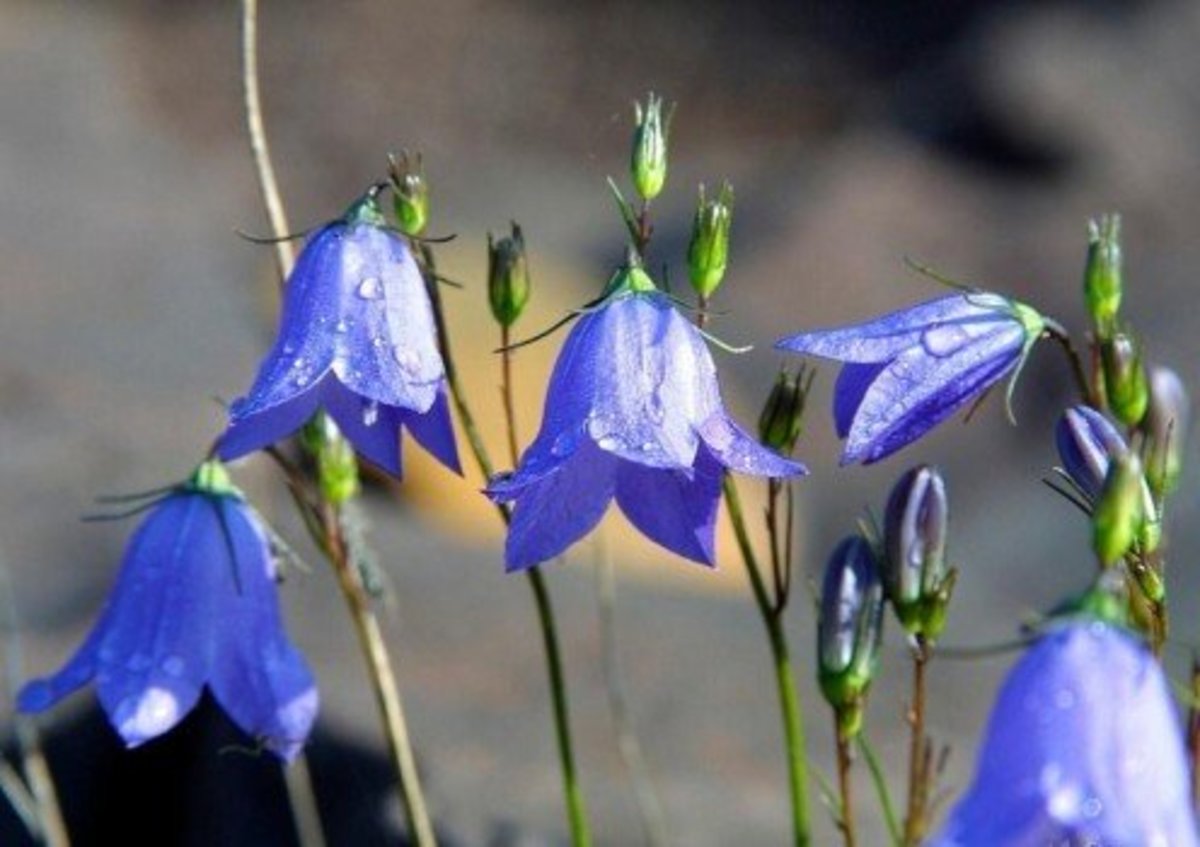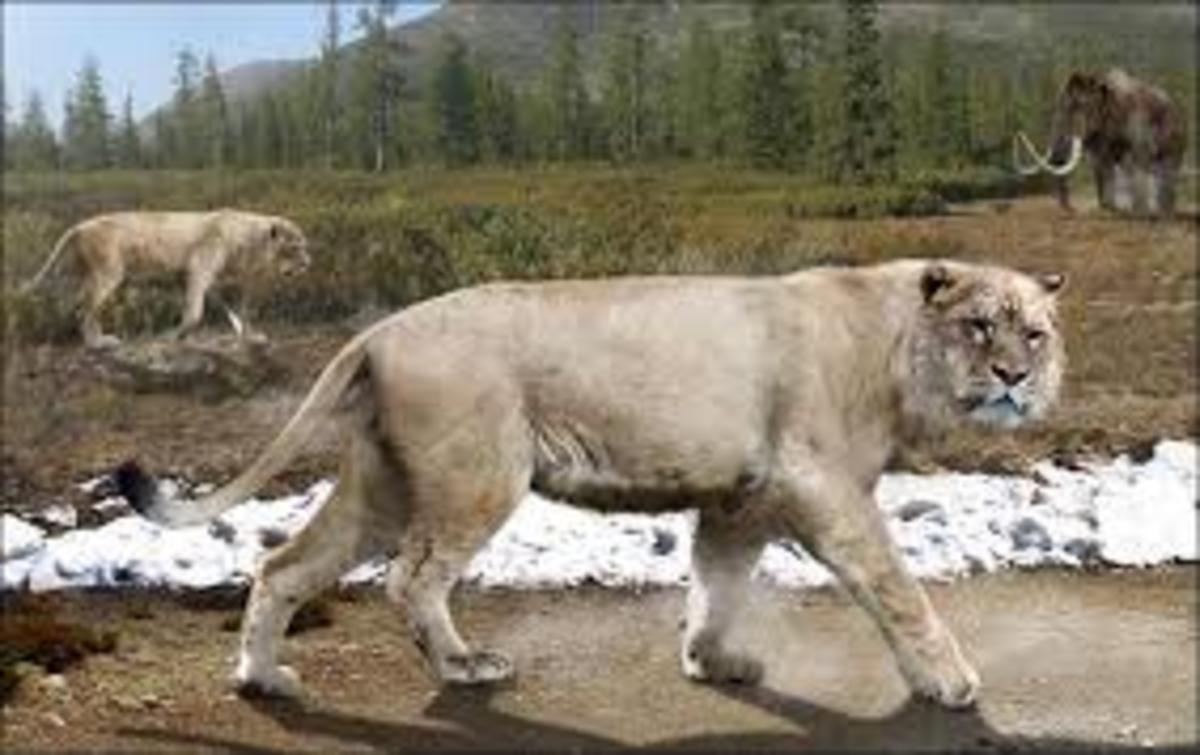Parasitic wild flowers of Tenerife: Dodder and Cytinus hypocistis
Parasitic plants
In the same way that there are countless parasitic animals that have other animal hosts there are a very large number of parasitic plants that derive their nutrition, in whole, or in part, from other plant species.
Parasites have very complicated life cycles and may appear as very strange but they all have a place and a part to play in the intricate web of life on Earth. There are a number of parasitic plant species on Tenerife with the Dodder (Cuscuta europea) and Cytinus hypocystis being the most notable.
Dodder photo
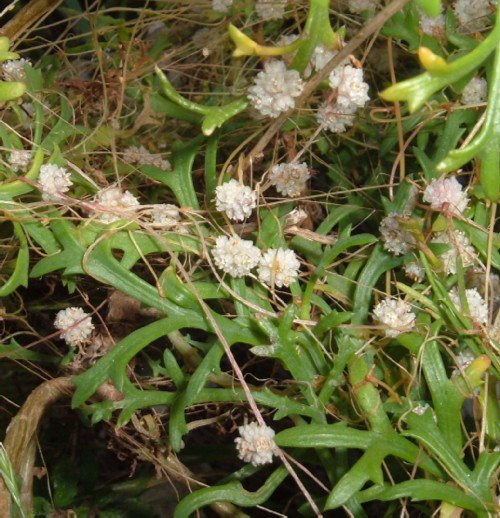
Dodder
There are over 150 species of Dodder and these unusual plants are distant relations of the Bindweed and Morning Glory vines being part of the Convolvulaceae family. Like these plants the Dodders are climbers too but their wiry stems are more or less leafless apart from tiny scales.
Dodder plants are yellow, orange or a reddish colour and once they have found a host plant they attach themselves to it and then warp their twining stems around its stalks or trunk. Dodders have no roots apart from for the first few days of their lives as seedlings. They do, however, produce tiny flowers that are a pinkish, cream or white colour in most types.
Dodders have a variety of descriptive and apt alternative names including devil's hair, goldthread, hairweed, love vine, pull-down, strangleweed, angel hair, and witch's hair.
Dodder seeds can often stand a very long period of dormancy but once they have germinated they must find a host plant within about five days at the maximum or they will perish. Because they have no proper leaves that contain the green pigment chlorophyll they are unable to derive nutrition from the sun via the process of photosynthesis.
Dodder seedlings must find a suitable host and then attach themselves to its stem so they can tap into its sap and do this for the rest of its life. There are many host species for the different types of Dodder and some of these hosts include bushes and small trees. In tropical climates it is possible for a Dodder to keep growing and cover a very large area with their twining stems.
Once a Dodder has successfully found a host and tapped into its life-sustaining sap then the plant has no further use for its root which will wither away. A Dodder can attach itself to more than one host plant too but will never obtain any nutrition in the normal way from the soil or from the sunlight.
In some parts of the world the Dodder species that grow there are regarded as weeds because they can strangle and weaken plants that are being cultivated.
Cytinus photo
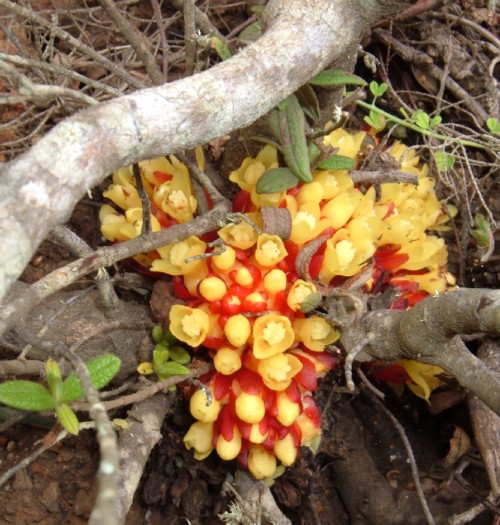
Cytinus and the Rafflesia
The Cytinus species are very weird but very attractive flowers that were once included in the family Rafflesiaceae that contains the largest flower in the world, which is Rafflesia arnoldii, a bizarre plant with a flower up to a metre across that stinks of rotting meat and that grows in the rainforests of Indonesia and Malaysia. The Cytinus species are now in their own genus, the Cytinaceae.
The species found in Tenerife, though it is nevertheless a rare plant, is Cytinus hypocistis. It is very similar to C. rubra but this is now regarded a subspecies.
C. hypocistis is a parasite of species from the Rock-rose (Cistaceae) family. In Tenerife this is usually Cistus monspeliensis. I have found them growing on the way to the remote mountain village of Teno Alto.
The plant can only be seen when it is in flower because at this stage of its life-cycle it sends up flower buds from the rootstock and base of the trunk of its host plant. The little flowers are yellow and this contrasts with the red of the outer parts. A group of these flowers around the base of a Rock-rose bush looks most unusual and is sure to catch your eye.
Like the Dodder, Cytinus is unable to produce its own chlorophyll and relies totally on its host. The flowering parts of this weird little parasitic plant can be cooked like asparagus but this is most surely a waste of such a wonderful novelty of the plant kingdom.
Copyright © 2013 Steve Andrews. All Rights Reserved.

